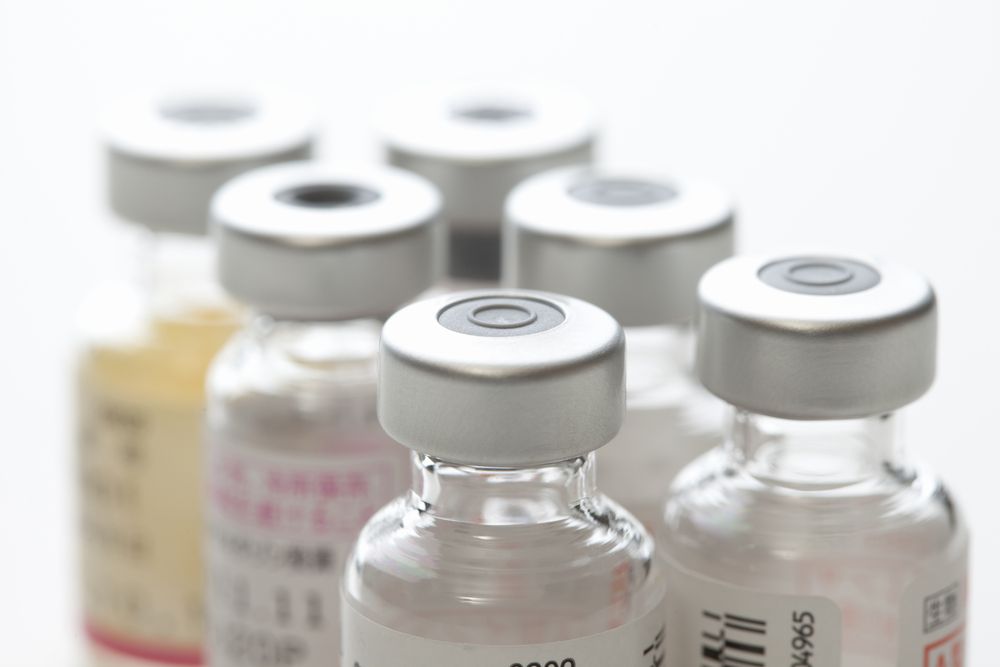The High Impact of Disease vs Financial Well-Being
Patient access to biologic therapies is an issue throughout the European Union where the authors of a review article zero in on “why.” Access issues, they find, have a lot in common with access issues here in the U.S.
(©KPG_PaylessShutterstock.com)

An international group of physicians writing in Frontiers in Pharmacology addressed market access policies in the European Union for biologics used to treat immune-mediated inflammatory diseases. The review article provides an interesting perspective for physicians here in the U.S. who struggle with many of the same access issues highlighted in this article.
The authors focused on barriers, such as cost, and possible solutions, such as the development and introduction of biosimilars.
The introduction of biologics over the last 30 years has transformed the way we treat inflammatory disease and greatly improved outcomes for patients. Biologics, such as anti-tumor necrosis factors (anti-TNF) and anti-interleukin antibodies (anti-IL), are widely used in rheumatoid arthritis (RA), psoriasis (PsO), psoriatic arthritis, Crohn’s disease (CD), and ulcerative colitis (UC).
While efficacy and safety have been proven for biologics, high costs and tight budgets have led to highly variable access throughout the world.
RHEUMATOID ARTHRITIS IN THE EU
The European League Against Rheumatism (EULAR) recommends biologics for the treatment of rheumatoid arthritis when patients have at least one poor prognostic factor such as early joint damage. And, the patient does not adequately respond to DMARDs. But even with strong recommendations, the proper use of biologics is highly variable across western Europe. Central and Eastern European countries saw significantly lower usage than western countries.
While the reasons for such high variability are complex, differences between countries in treatment guidelines and reimbursement rules a likely key factors. Some countries were found to provide no reimbursement while others set guidelines requiring higher disease activity scores prior to biologic therapy. A link was found between higher gross domestic product and less stringent eligibility criteria for biologics in RA. Further barriers to access identified included high dispensing rates in hospitals rather than in outpatient settings, poor access to primary care, lack of diagnosing RA by primary care doctors, and inefficient referral patterns. Finally, it was found that countries with high biologic sales tended to institute therapy earlier in the course of RA.
The authors wrote there exists a large economic burden for government payors and patients. Both direct and indirect costs were high owing to the large proportion of working age patients and loss of productivity.
PSORIASIS
Biologic therapies are very effective treatments in patients with moderate to severe psoriasis. Guidelines recommend biologic medication as second line treatment for psoriasis in patients who fail to respond to conventional therapy, but as with RA, biologics are persistently underused for psoriasis throughout Europe.
In one study, only 20 percent of appropriate psoriasis patients were being treated with biologics. Cost was the most common barrier to biologic treatment in PsO. Local health care policies were also cited as barriers and again central and eastern European countries saw lower biologic usage when compared with western countries. Barriers in these countries were similar to RA findings and included local guidelines and reimbursement differences. Finally, several studies found that increasing age lower educational attainment and employment status were individual factors leading to low biologic usage.
While the economic burden of psoriasis is notably lower when compared to RA, the cost was not insignificant.
INFLAMMATORY BOWEL DISEASE
Biologics have proven to be effective treatments for ulcerative colitis and Crohn's disease with current European guidelines recommending them in refractory or relapsed disease after conventional treatment. Studies reviewed found biologic use to range from 8-33 percent% with a trend toward more use over time.
Again, prescribing of biologics was strongly correlated with GDP from country to country with more stringent prescribing criteria in countries where they were less affordable. For the most part, lower utilization was reported in UC when compared to CD.
Economic burden related to IBD was similar to PsO. Like RA, IBD suffers are most often young leading to disproportionate indirect financial cost in the form of lost work productivity.
IMPACT OF BIOSIMILAR MEDICATIONS
While regulatory permitting is streamlined for biosimilar drugs, they must still undergo rigorous three-tier examination culminating in randomized clinical trials. Evidence exists that the introduction of biosimilar drugs has led to negotiation of significantly lower prices in Norway and the United Kingdom. However, an unintended secondary effect was seen with lower utilization of the branded biologics.
Forecast models predict that biosimilars might replace the branded biologics in some cases and dramatically reduce expenditures. Cost savings may lead to improved access to the drugs, better reimbursement, and improved general care of patients. Education for providers will be essential to dispel preconceived negative perceptions and allow broader usage of biologics for IMIDs based on guidelines.
FINAL THOUGHTS
EULAR advocates for cost-effective approaches to IMID treatment. This is an important mission often neglected by medical societies and organizations. Focused on treatment, prevention, and research, clinicians often discount the high impact disease has on financial wellbeing and how that in turn affects health.
The authors have uncovered an unfortunate truth. That while we have evidence and guidelines aimed at reducing disease burden and improving quality of life in patients with inflammatory disease, barriers still exist to providing the recommended treatment across maps and individual cohorts. The goal for clinicians cannot only be diagnosis and treatment but must also include facilitation and advocacy.
REFERENCE
Daniel C. Baumgart, Laurent Misery, Sue Naeyaert, and Peter C. Taylor. Biological Therapies in immune-mediated inflammatory diseases: can biosimilars reduce access inequities? Front. Pharmacol. 10:279. doi: 10.3389/fphar.2019.00279
ABOUT THE AUTHOR
Gregory M. Weiss, M.D., is a cardiothoracic anesthesiologist practicing in Virginia. He is a frequent contributor to Rheumatology Network.